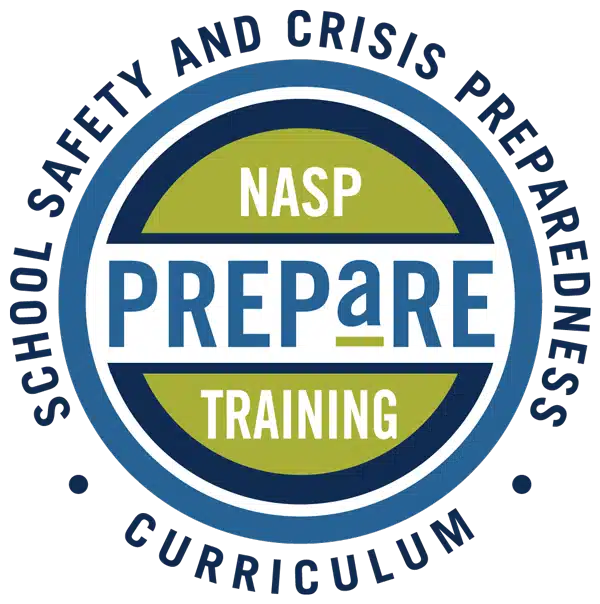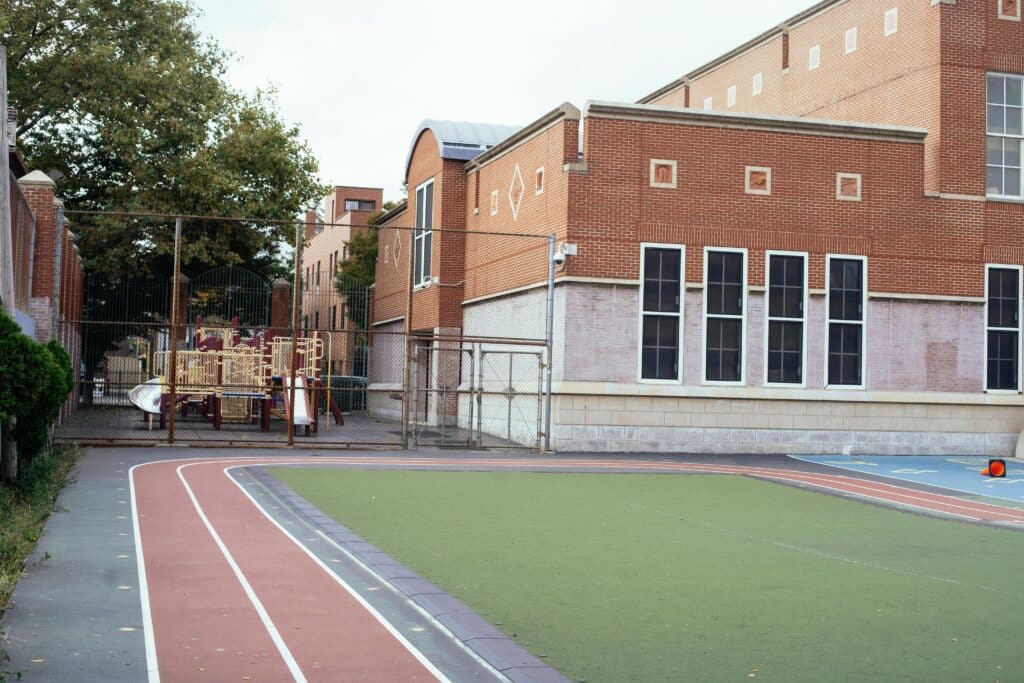School Community Crisis preparation & support
Playlists > School Community Crisis Preparation & Support
This playlist contains resources that align with trauma-informed crisis preparedness, response and support. While ideally every school and district should have the internal capacity to respond effectively in a crisis, some traumatic events require outside assistance from professional with specific expertise in school crisis intervention. The guidance here is not a substitute for crisis team training, planning and more in-depth knowledge of the school crisis prevention and intervention process. Click on the links to go to each resource.

This 1-hour course provides an overview of Psychological First Aid (PFA), which began as a tool to help first responders cope with victims experiencing trauma on the scene. There are several models of PFA, but Psychological First Aid—Listen, Protect, Connect (PFA—LPCMT) was developed in response to a series of school shootings in the 1990s. Click here to be directed to the PFA course.
The Psychological First Aid Field Guide provides guidance on responding to disaster, violence, or terrorism events using the Psychological First Aid intervention. This version gives school administrators, educators, and staff practical assistance to meet immediate needs and concerns, reduce distress, and foster adaptive coping in the wake of a disaster. The manual includes in-depth information about each of the eight core actions and accompanying handouts for administrators, school staff, educators, students, and parents and caregivers. Click here to be directed to the PFA Field Guide.
- 60 mins

This course provides a quick overview and strategy ideas for supporting students dealing with grief and loss. Click here for Supporting Students with Grief and Loss.
Coalition to Support Grieving Students: an extensive website created by school and mental health professional to share a set of industry-endorsed resources that empower school communities in the ongoing support of their grieving students. Click on the link for the website of Coalition to Support Grieving Students.
Rainbows for All Children: an organization that provides groups in communities and schools to help children and youth cope with grief. Click here for Grief Support Services | Rainbows for All Children.
- 30 mins

- extended learning
STEPS TO TAKE AFTER A CRISIS: This brief guide provides reminders for crisis team members regarding steps to take to ensure safety, meet immediate needs, and work to restore normalcy following a crisis event. The National Association of School Psychologists website has lots of guides specific to crisis needs. Click here for the Crisis Response Guide.
DIRECT CRISIS SUPPORT: Having established relationships with community mental health providers that can respond to your school’s crisis and grief needs is ideal. Think about who you would reach out to in such an event. The National Association of School Psychologists’ (NASP) offers consultation and support to school and districts in the aftermath of a crisis. While ideally every school district should have the internal capacity to respond effectively in a crisis, some traumatic events require outside assistance from professionals with specific expertise in school crisis intervention. Click on the link for more information on accessing Direct Crisis Support.
CULTURAL COMPETENCE: There are many ways that schools can incorporate cultural competence into their overall crisis plans and preparations. To begin with, crisis plans should identify and address the diverse needs within the community. Click on the link for information on Culturally Competent Crisis Response.
DEVELOPMENTAL CONSIDERATIONS: Schools also need to consider the developmental needs of all their students, including students with intellectual and developmental disabilities. Learn more at Concepts of Death – Coalition to Support Grieving Students.
- General Post-Crisis (resources)

- extended learning
Schools can play a vital role in providing important support to students after a crisis to promote their understanding of the event, minimize the academic impact through academic accommodations, help them learn coping strategies to accelerate their adjustment and minimize their distress, and minimize problematic coping mechanisms and behavioral difficulties. Check out the resources below to add to your toolbox.
Supporting Schools During and After Crisis: From Center of PBIS, resources to support the use of a multi-tiered systems of support (MTSS) framework to support students, families, and educators during the transitions back to school during and following a crisis (e.g., a pandemic, natural disaster, other emergency) in a manner that prioritizes their health and safety, social and emotional needs, and behavioral and academic growth.
National Center for School Crisis & Bereavement: These guidelines included in Death of Student or Staff Booklet are designed to help school administrators, teachers, and crisis team members respond to the needs of students and staff after a loss has impacted the school environment, such as after the death of a student or staff member or when deaths occur that affect many people in the community.
- Specific Post-Crisis (resources)

- extended learning
One of the most important things for children in any type of crisis is to have at least one caring adult provide a sense of safety and support. Adults can help children by supporting their emotional and psychological needs, helping them understand the events factually, and providing the opportunity to process their reactions, as needed. Read on for additional tip sheets related to specific traumatic events.
NATURAL DISASTERS: Large-scale disasters, such as major tornados or wildfires, can have a strong emotional effect even for people not directly affected by the disasters. The scope of devastation and loss of life can be very disturbing and hard to comprehend. Large-Scale Natural Disasters: Helping Children Cope
SCHOOL SHOOTINGS: The National Child Traumatic Stress Network offers tip sheets for school staff and caregivers to support youth after shootings and other traumatic events. School Shooting Resources | The National Child Traumatic Stress Network
COMMUNITY VIOLENCE: Adults can help youth recognize that community violence does not have to dominate their lives if they understand their reactions to it, understand how to keep themselves safe, and understand how to make positive choices in dangerous times. NCTSN Resources
SUICIDE: When a person dies by suicide, many others are deeply affected. One study estimated that 115 people are exposed to each suicide, with 1 in 5 reporting that this experience had a devastating impact or caused a major life disruption. Postvention is a term often used in the suicide prevention field. Learn more about how your school can support those affected by suicide at the Suicide Prevention Resource Center. Long-Term Postvention – Suicide Prevention Resource Center
WAR & TERRORISM: intentional acts of violence that hurt innocent people are frightening and upsetting. Children and youth will look to adults for information and guidance on how to react. Families and school personnel can help children cope first and foremost by establishing a sense of safety and security. Helping Children Cope with Terrorism
- School Readiness (assessments)

- 15 mins
Although there is no universally agreed upon set of core domains, the National School Climate Center identifies five elements of school climate in the Safety Readiness Tool. One of these core domains is safety, which involves rules and norms, physical security, and social-emotional security.
Determine your school’s readiness by reviewing this tool by the National Association of School Psychologists, A Framework for Safe and Successful Schools.
- Crisis Drill Planning (toolkits)

- 10 mins
Keeping school campuses safe from active shooters or intruders is one component of a school emergency plan. It is also vital that these drills are planned for and executed in a trauma-informed way. Check out these resources around best practices and considerations when planning school-wide crisis drill and response planning. Note: this does not constitute an endorsement of a particular approach to training nor a specific training program.
Straight-A Safety Toolkits: From Safe and Sound Schools, these toolkits are designed to facilitate conversations, problem-solving, and partnerships in your school community.
Creating School Active Shooter/Intruder Drills: From NCTSN, this factsheet provides guidance on steps to consider when performing an active shooter/ intruder drill.
- PREPaRE School Crisis Prevention & Intervention Model (curriculum)

- extended learning
The PREPaRE curriculum has been developed by the National Association of School Psychologists (NASP) as part of NASP’s decade-long leadership in providing evidence-based resources and consultation related to school crisis prevention and response. PREPaRE training is ideal for schools committed to improving and strengthening their school safety and crisis management plans and emergency response.
- Trauma-Informed Best Practices for Armed Assailant Drills in Schools (guide)

- 20 mins
National Association of School Psychologists teamed up with various partners to develop a guide, Best Practice Considerations for Armed Assailant Drills in Schools, that provides guidance on the important factors schools must take into account when considering and choosing to conduct armed assailant drills. Read on for things to consider to decrease the risk of students and staff be re-traumatized by these drills.
